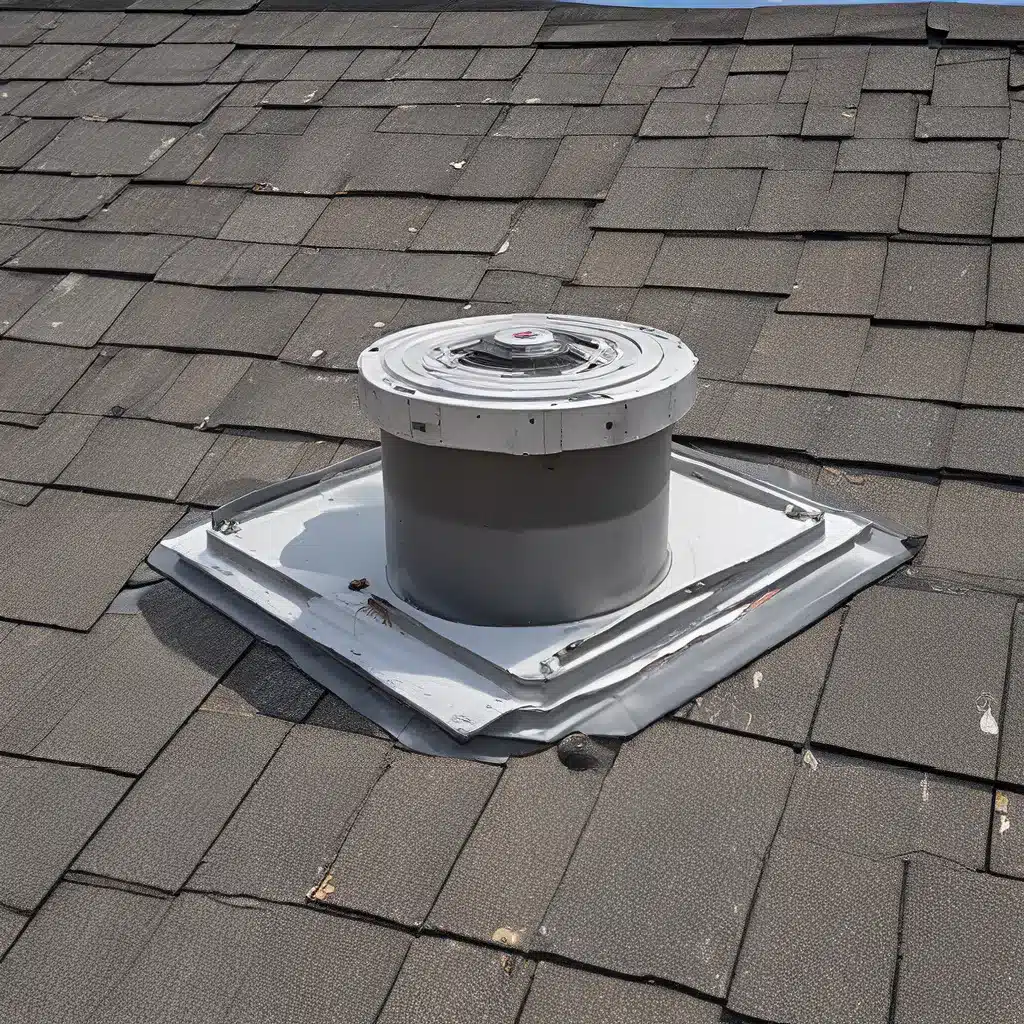
Staying Cool in Summer, Cozy in Winter: The Secrets of Roof Ventilation
As a homeowner, I’ve always been fascinated by the intricate interplay between my roof and the elements. It’s not just about keeping the rain and snow at bay – the way my roof is ventilated can have a profound impact on the comfort and energy efficiency of my home, all year round.
That’s why I’ve decided to dive deep into the world of roof ventilation strategies, exploring how they can help me achieve the perfect balance of temperature, air quality, and cost-effectiveness, no matter the season. Join me as I unravel the mysteries of natural, mechanical, and hybrid ventilation systems, and discover the best approach for my home’s unique needs.
Understanding the Basics of Roof Ventilation
At its core, roof ventilation is all about circulating fresh air throughout my living spaces. Whether it’s natural ventilation that harnesses the power of wind and convection, or mechanical ventilation that uses fans and ductwork, the goal is the same: to remove stale, polluted air and replace it with clean, rejuvenating oxygen.
But why is this so important, you ask? Well, it turns out that the air inside my home can actually be more polluted than the air outside, thanks to a buildup of contaminants like carbon dioxide, volatile organic compounds, and even airborne viruses. And poor ventilation doesn’t just affect air quality – it can also lead to issues like excessive moisture buildup, which can promote mold growth and damage my home’s structure over time.
Harnessing the Power of Natural Ventilation
One of the most appealing aspects of natural ventilation is its simplicity. By strategically placing openings like windows, vents, and skylights, I can leverage the natural movement of air to keep my home feeling fresh and comfortable.
During the warmer months, I can rely on cross-ventilation – opening windows and vents on opposite sides of a room to create a refreshing breeze. And when the temperature starts to drop, I can use stack ventilation, which takes advantage of the natural tendency of warm air to rise and escape through high-placed openings.
But natural ventilation isn’t just about cooling – it can also help regulate humidity levels and prevent the buildup of harmful pollutants. By allowing a steady stream of fresh air to circulate through my home, I can maintain a healthier indoor environment and potentially reduce my energy costs.
Roof vents, in particular, can play a crucial role in natural ventilation, allowing hot air to escape from the attic and preventing heat buildup that can make my home feel stuffy and uncomfortable.
Exploring the Benefits of Mechanical Ventilation
While natural ventilation can be an effective and energy-efficient solution, there are times when a more controlled, mechanical approach may be necessary. This is where mechanical ventilation systems come into play, utilizing fans, ductwork, and even heat recovery technology to ensure a consistent flow of fresh air.
One of the key advantages of mechanical ventilation is its ability to maintain temperature and air quality regardless of external weather conditions. Even on a freezing winter day, a well-designed mechanical system can introduce fresh air into my home while recapturing heat from the outgoing air, helping to keep my living spaces comfortable and energy-efficient.
Mechanical ventilation can also be equipped with advanced filtration systems, further improving the indoor air quality by removing harmful particulates, allergens, and even airborne viruses.
Of course, with the added complexity of fans, motors, and ductwork, mechanical ventilation does come with its own set of maintenance requirements and energy costs. But for many homeowners, the benefits of precise temperature and air quality control can make it a worthwhile investment.
Discovering the Efficiency of Hybrid Ventilation
So, what if I could harness the best of both natural and mechanical ventilation? Enter the world of hybrid ventilation – a strategic combination of the two approaches that can deliver optimal performance all year round.
The beauty of hybrid ventilation lies in its adaptability. During the colder months, I can rely on the mechanical component to efficiently ventilate my home, using heat recovery technology to minimize energy losses. Then, as the temperature rises, I can transition to a natural ventilation mode, opening up windows and vents to take advantage of the gentle breezes and convection currents.
This hybrid approach allows me to enjoy the energy-saving benefits of natural ventilation while still maintaining the precise control and consistent air quality provided by mechanical systems. It’s the best of both worlds, tailored to the unique needs of my home and my local climate.
Choosing the Right Ventilation Strategy for My Home
As I’ve learned, there’s no one-size-fits-all solution when it comes to roof ventilation. The optimal strategy for my home will depend on a variety of factors, including the climate, the size and layout of my living spaces, and my personal preferences for comfort and energy efficiency.
To help me make the right decision, I’ll need to carefully assess my home’s current ventilation setup and identify any areas for improvement. A professional roofing contractor can be an invaluable resource, providing expert guidance and recommendations based on their extensive experience.
Together, we’ll explore the pros and cons of natural, mechanical, and hybrid ventilation systems, weighing the potential benefits against the associated costs and maintenance requirements. And who knows – I may even discover a few unexpected ways to enhance the overall performance and longevity of my roof, all while keeping my home comfortable and energy-efficient, year-round.
So, let’s dive in and uncover the secrets of roof ventilation, shall we? With the right strategy in place, I’m confident I can create a living environment that’s as cozy and refreshing as a cool summer breeze.